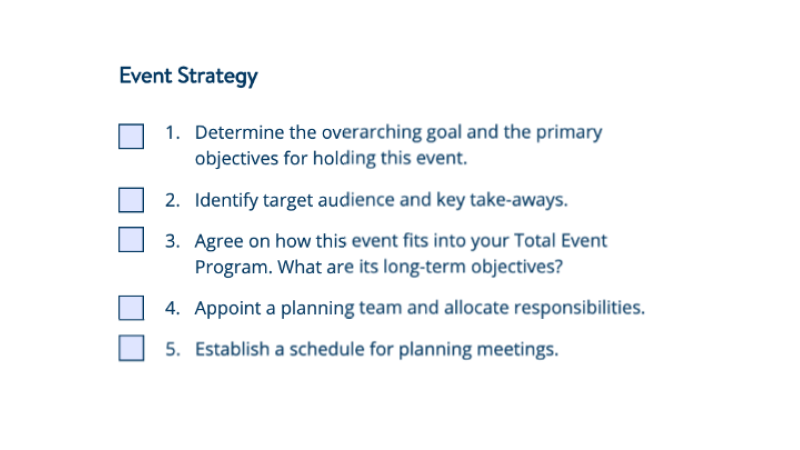Video now connects us on a whole new level – it’s how we communicate, learn, entertain, and work today. While we rapidly shift to a digital-first approach globally, we must embrace the tremendous impact the pandemic has had on the tradeshow and events industry, and most significantly, what the future holds for many organizations’ biggest pipeline drivers annually.
2020 is an evolutionary moment for video, which leaves the event industry to only look ahead at the many benefits that digital transformation – and especially video – bring to organizations’ experiences.
According to the Professional Convention Management Association (PCMA), 76% of event planners are taking their events virtual, and that trend seems here to stay. We’ll help you understand the industry’s shift and the critical components of a virtual event – from business objectives to engaging content to the different technology needs.
There are three key trends all event marketers need to understand.
Virtual events are here to stay, even if it’s a hybrid model.
Facebook, Apple, Conde Nast, and events like CES and South by Southwest are already scheduling their events for 2021, and virtual is at the core.
Virtual events have value beyond traditional on-site events, with companies reporting attendee profiles that extend to more prospects, more profound roles within organizations, and reach global audiences that might not have invested in travel required to attend.
Freightwaves, a leading provider of trucking news, media, and analysis, expected 2,500 in-person attendees at its annual spring conference. In the transition to a virtual event, they expected 30,000 virtual visitors.
In the end, their virtual event reached over 90,000 people, connecting them with viewers worldwide that would not have attended in-person. It was clear that the content and format pulled in viewers. In fact, people not even associated with freight or transportation attended their 3-day broadcast to watch and learn.
Virtual events have the potential to be the antidote to Zoom fatigue, engaging audiences in new ways.
Organizations that invest in new, engaging content during their virtual event create a long-term relationship with the viewer.
Brands and marketers must reimagine the virtual experience, from registration and networking to breakout sessions and keynote addresses. Virtual forums enable content that goes deep on specific topics, giving attendees a richer, more personalized experience.
For example, NAB Show, the annual trade show of the National Association of Broadcasters (NAB), delivered a new virtual experience, called NAB Show Express in place of its annual April event. Reaching over 40,000 industry professionals, this two-day virtual event featured over 200 video-on-demand assets for conference sessions, real-time video clips on social channels, and eight-hours of streamed content daily.
All of these trends rely on three core principles. First, to achieve broad audience reach, you need reliable video technology. With a scalable video platform, marketers can reach and engage with a vast and more diverse audience in geographies worldwide. Reliability also enables a high-quality experience with no technical difficulties. With scalability and reliability firmly in place, the focus can shift to providing the audience’s best possible experience.
Second, engage the audience through personalization and interactivity. This allows marketers to more easily and naturally engage with their audience. By taking advantage of interactive features embedded in software, marketers can engage audiences through polls, social networking features, chat windows, breakout discussions, and even recommend sessions based on previous viewing history.
Third, maximize value to your organization with an analytics and monetization strategy. Virtual event tools and platforms equip marketers with a plethora of new tracking and analytics capabilities, allowing marketers to adjust content efforts in real-time and adapt to fluctuating engagement metrics and customer sentiments. These analytic capabilities offer insights into ROI so that steps can be calibrated for the next virtual event.
During the pandemic, we’ve seen multiple customers pivot to virtual events:
- New video users. Users who quickly adopted video for internal and external communications; at first for business continuity and now for reaching new audiences.
- Minimal video users. Companies that were using video in some areas quickly expanded to convert events and campaigns to leverage video.
- Video experts. Users that are taking video to the next level and becoming video broadcasters.
- At Brightcove, we launched PLAY TV, an always-on Netflix-like video streaming service, in place of our annual conference to make our content available on various devices and platforms.
- We see companies adopt an over-the-top approach for “corporate TV,” which creates streaming services to broadcast video content outside of set event timeframes.
- The arts and entertainment industry rapidly shifted to meet audiences at home. The Met Opera reached over 500K fans in a recent gala event. We also recently streamed Dropkick Murphys’ Streaming Outta Fenway concert with Bruce Springsteen, making history the first audience-free concert at a major U.S. stadium.
At Brightcove, the last six months have been a time of learning, communication, and innovation. We have partnered with and listened to our customers and the problems they are solving through video. As for Brightcove events, we moved to a 100% virtual model and saw a tremendous response as audiences want to continue learning more about video, especially from their peers and other practitioners. To learn more about hosting a virtual event, downloadThe Definitive Guide to Virtual Events, it includes everything you need to know to engage audiences and build your brand.
As part of this journey, watch the on-demand sessions from the recent Brightcove Video Strategy Summit. In this three-part series, industry experts will discuss their experiences and predictions around virtual events’ new reality. It’s a summit you can’t afford to miss. Sessions are available at https://videostrategysummit.brightcove.com/.
Written by Brenda Gradek, Vice President, Product Marketing & GTM Strategy at Brightcove





